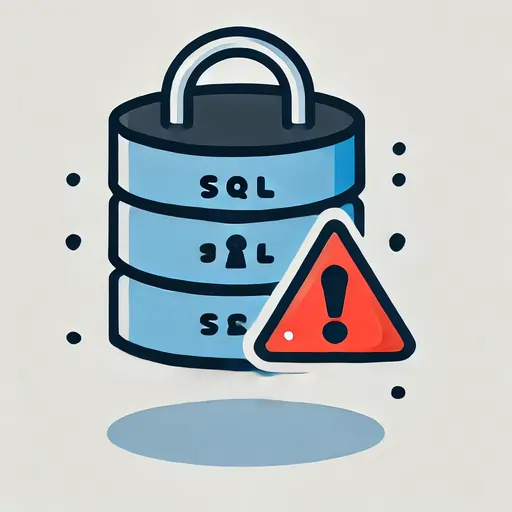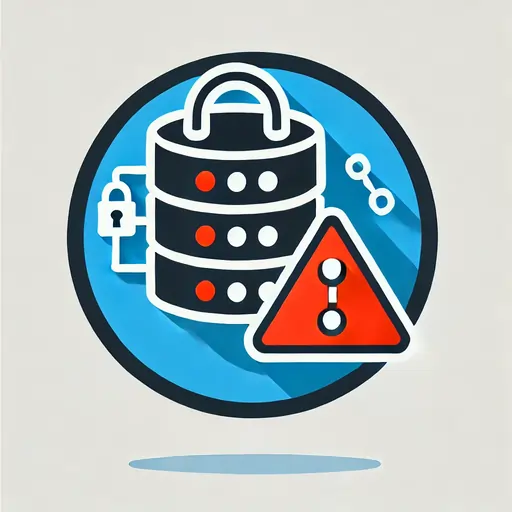With thousands of new web vulnerabilities discovered every year, website owners face a constant battle to keep their sites secure. Among the most dangerous of these is SQL Injection (SQLi) — a technique that allows attackers to manipulate a website’s database by exploiting weaknesses in how it handles user input.
This vulnerability is not just a theoretical risk; it’s a favorite method for cybercriminals to gain unauthorized access, steal sensitive data, or even take complete control of a website.
SQL Injection is particularly concerning for WordPress users, where improperly coded themes and plugins can open the door to these attacks.
To protect your site, it’s crucial to understand how SQLi vulnerabilities are exploited, the impact they can have, and what you can do to prevent them. This article will delve into the mechanics of SQL Injection, real-world examples of its exploitation, and best practices to safeguard your site against this pervasive threat.
1. What is SQL Injection?
SQL Injection (SQLi) is a type of security vulnerability that occurs when an attacker manipulates the Structured Query Language (SQL) queries used by a web application to communicate with its database.
This vulnerability arises when user input is improperly sanitized or validated, allowing malicious code to be injected directly into the SQL queries. Essentially, SQL Injection exploits the application’s lack of control over what input it considers legitimate, opening the door for unauthorized database access.
EXAMPLE:
Imagine a web form that asks for a username and password. If the developer has not implemented secure coding practices, such as using prepared statements or sanitizing inputs, a hacker could input harmful SQL commands instead of a normal username or password. For example, instead of entering just a username, an attacker might enter something like ' OR '1'='1' --, tricking the database into thinking it should always return a positive result. This small, seemingly innocent input could give the attacker access to sensitive areas of the application or database.
The consequences of a successful SQLi attack can be severe. Attackers might gain access to sensitive information, manipulate data, or even execute administrative commands on the database.
SQL Injection is one of the most common and dangerous web application vulnerabilities because it targets the very core of a website’s functionality — its database. Given the potential impact, understanding and preventing SQL Injection should be a priority for anyone responsible for web security.
2. How Does SQL Injection Work?
SQL Injection attacks work by manipulating a website’s database queries to execute malicious commands. At the heart of this vulnerability is the web application’s failure to properly sanitize user inputs. When a site blindly trusts what users input—whether it’s a login form, a search bar, or a URL parameter—it leaves the door wide open for exploitation.
To better understand this, think of SQL Injection like a customer at a restaurant. Normally, customers order items off the menu. But imagine a customer saying, “I’ll have the soup, a salad, and… all your secret recipes.” A good waiter would immediately recognize this as an unreasonable request, but a web application might not have such common sense. Without proper checks, the application might serve up everything—just like a database that’s not properly secured might deliver all its contents to a hacker.
Attackers exploit SQLi by inserting malicious SQL code into input fields that the website does not properly filter or validate. When the application passes this code directly to the database, the database executes it as if it were part of the original query. For example, an attacker might input a command that changes the SQL query from “SELECT * FROM users WHERE username = ‘input’” to “SELECT * FROM users WHERE username = ‘admin’ –” effectively bypassing security checks and gaining unauthorized access.
By exploiting SQL Injection vulnerabilities, attackers can perform a wide range of malicious actions, such as:
- Reading sensitive data: Extracting personal data, passwords, and confidential information from the database.
- Inserting or modifying data: Adding new records or changing existing ones, which could lead to defacement or the injection of malware.
- Escalating privileges: Creating a new admin account to gain full control of the website, as was seen in the case of the WordPress Automatic plugin, where attackers exploited the lack of input checks to execute arbitrary SQL queries.
SQL Injection attacks can be automated, and the techniques used are constantly evolving, making them a persistent threat to web applications. The best defense is understanding how these attacks work and implementing robust measures to prevent them.
Protect Your Website from SQL Injection Attacks
Don’t let SQL Injection vulnerabilities put your website at risk. At WP ShieldMatrix, we offer comprehensive security audits and prevention strategies tailored to safeguard your WordPress site from potential threats. Visit WP ShieldMatrix Security Audits and Prevention to secure your site and protect your data today.

3. Potential Impact of SQL Injection Vulnerabilities
SQL Injection vulnerabilities can have a devastating impact on any web application, and their effects can range from unauthorized data access to full site compromise. To fully understand the gravity of this threat, it’s important to explore the specific dangers posed by SQLi attacks.
1. Unauthorized Data Access:
A successful SQL Injection attack allows an attacker to bypass authentication measures and access sensitive information stored in the database. This could include user credentials, financial records, or any other private data. Without effective measures for unauthorized database access prevention, such as proper input validation, attackers can extract valuable data and cause serious security breaches.
2. Data Manipulation and Deletion:
Beyond just reading data, an attacker can use SQLi vulnerabilities to manipulate or delete information in the database. They might alter content, change user privileges, or even inject malicious code. This type of attack is particularly damaging for websites that depend on accurate and real-time information. Mitigating SQLi vulnerabilities is critical to prevent attackers from tampering with important data.
3. Website Defacement or Malicious Code Injection:
Cyberattack methods targeting SQL vulnerabilities may include injecting harmful scripts that lead to website defacement or loading malicious content. These attacks can harm your site’s reputation, impact user trust, and potentially spread malware to visitors, making secure database query practices vital for web security.
4. Creation of Unauthorized Admin Accounts:
Attackers exploiting SQL Injection vulnerabilities may create new admin accounts without authorization, gaining full control over the site. This allows them to make changes, delete data, or lock legitimate users out. The real-world examples like the WordPress Automatic plugin demonstrate how a lack of input checks can lead to the creation of unauthorized accounts and full site compromise.
5. Full Control Over the Database:
In the worst-case scenario, attackers gain full control over the database. This level of access enables them to execute any command they wish, potentially escalating attacks to other systems within the network. Robust secure coding practices for WordPress are essential to defend against this level of threat and maintain the overall security of your web application.
Understanding the full range of impacts caused by SQL Injection is the first step toward implementing effective website security best practices. In the next section, we’ll cover strategies for preventing SQL Injection attacks and maintaining a secure online environment.
4. Best Practices to Prevent SQL Injection in WordPress
Preventing SQL Injection attacks requires a proactive approach to web security, particularly for WordPress sites, where plugins and themes can often introduce vulnerabilities. Here are some website security best practices to help keep your site secure:
1. Never Trust User Input:
The most fundamental rule in preventing SQLi vulnerabilities is to assume all user input is potentially malicious. Every piece of data coming from users—whether it’s from a form, URL parameter, or cookie—must be treated with suspicion. Proper user input sanitization techniques involve filtering, validating, and escaping all input before it interacts with the database.
2. Use Secure Database Query Practices:
One of the most effective defenses against SQL Injection is to use prepared statements and parameterized queries. In WordPress, always use the $wpdb->prepare function for any database interaction involving user input. This function ensures that all inputs are properly escaped, making it impossible for an attacker to alter the query. Additionally, use placeholders (like %s for strings or %d for integers) rather than injecting variables directly into SQL queries.
3. Stay Updated on Security Patches:
For those who build websites without writing their own code, keeping up with the latest security updates and patch management is crucial. Regularly update all WordPress plugins and themes to ensure they are patched against known web application vulnerabilities, including SQLi in WordPress plugins. A commitment to mitigating SQLi vulnerabilities means acting quickly whenever a new vulnerability is discovered.
4. Conduct Regular Security Audits:
Performing frequent SQL Injection risk assessments and security audits is essential for identifying potential vulnerabilities before attackers can exploit them. By using specialized tools or hiring professionals to conduct comprehensive website security audits, you can ensure that any weak points, like improperly sanitized inputs or outdated plugins, are addressed proactively.
5. Limit Database Permissions:
A common oversight in many web applications is granting excessive permissions to the database account used by the application. Restrict these permissions to only what is necessary for the site to function. By following the principle of least privilege, you can reduce the damage potential of a successful SQL Injection attack, as attackers will not be able to perform high-risk actions such as dropping tables or modifying key data.
6. Use Web Application Firewalls (WAFs):
Implementing a Web Application Firewall can help detect and block SQLi vulnerabilities and other common web application vulnerabilities before they reach your website. WAFs add an additional layer of security by filtering out malicious traffic, which is especially important if other defenses fail or are bypassed.
By adopting these secure coding practices for WordPress and maintaining a vigilant approach to website security, you can significantly reduce the risk of SQL Injection and keep your site and its data safe from attackers.
In the conclusion, we’ll summarize the key steps for safeguarding your site and maintaining robust security against SQL Injection attacks.
Conclusion: Safeguarding Your Website Against SQL Injection
SQL Injection vulnerabilities are among the most common and dangerous threats facing websites today. From gaining unauthorized access to stealing sensitive data or taking full control of your site, attackers can exploit these weaknesses with devastating effects. However, by understanding how these cyberattack methods targeting SQL vulnerabilities work and implementing secure database query practices, you can greatly reduce the risk to your website.
Start by treating all user input as potentially harmful, utilizing secure coding techniques like the $wpdb->prepare function, and regularly updating your plugins and themes to address SQLi in WordPress plugins. Don’t forget to conduct regular SQL Injection risk assessments and limit database permissions to the bare minimum. Adding layers of defense, such as Web Application Firewalls, will further protect against common web application vulnerabilities.
Ultimately, protecting your site is an ongoing effort, requiring constant vigilance and proactive management of your security posture. By following these best practices to prevent SQL Injection attacks, you can ensure that your website remains secure, your data stays protected, and your users’ trust is maintained.
For a more comprehensive approach to safeguarding your WordPress site
Consider a professional security audit
Don’t wait until it’s too late—secure your site today.
